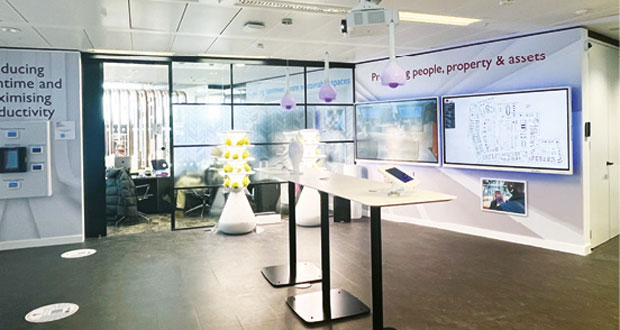 Cijo Joseph, Chief Technology and Information Officer, Mitie explores the technology driving facilities transformation
Cijo Joseph, Chief Technology and Information Officer, Mitie explores the technology driving facilities transformation
Across all industries, there’s been a technological shift over recent years, with continuous innovation proving crucial to keeping up with societal changes. The facilities management industry is no different. We’ve not only faced the pandemic and the impact that has had on workplaces, but also cost of living pressures and the heightening impacts of climate change. It’s vital the FM sector stays ahead of the curve in bringing new technology to customers, to support them in meeting these challenges.
Over the past six years Mitie has invested £145 million in driving innovation and setting the foundation for technology to support our people and customers’ evolving needs. This includes introducing API (Application Programming Interface) connectivity to a Digital Platform, allowing different data sources to speak to each other, which significantly increases the level of insight we can gather. We’ve also increased the amount of data we can store by 15 times over four years, to 772 terabytes – three quarters of a Petabyte. For reference, a Petabyte is equivalent to 20 million tall filing cabinets.
At the end of last year, we launched our Facilities Transformation Hub, demonstrating the latest innovations built on this foundation, using data as the building blocks. The Hub showcases the cutting-edge technology which we’re embracing to help customers to embrace five key mega-trends:
ACCELERATING THE PATH TO NET ZERO
With many organisations reaching a critical stage in their net-zero journeys, smart data tools can support them in driving down emissions. The creation of analytics software allows customers to review data from across their estates to identify energy usage hotspots, guiding them on where to prioritise when introducing energy efficiency measures like motion sensor lights.
Once energy usage has been reduced, the next step is introducing cleaner power. Using AI-based renewable energy modelling, our Energy Managers can determine the environmental and cost impacts of different green power solutions like solar panels or heat pumps. With all stakeholders, from the FM to the finance team, able to see the outcome of different projects, customers can decide on the right combination of solutions for them.
ENSURING BUILDINGS AND EQUIPMENT ARE EFFICIENT AND PRODUCTIVE
Taking a data-driven approach to building maintenance is having a significant impact on the efficiency of buildings. Remote digital maintenance involves the collation of data from equipment to pinpoint malfunctions and predict maintenance requirements in near-real time. While it’s sometimes taken for granted, making sure features like heating and lighting are always running smoothly improves the office experience and is also central to energy efficiency.
DESIGNING COMMUTE-WORTHY SPACES TO SUPPORT HYBRID WORKING
Hybrid working is here to stay, and with it comes the need to design commute-worthy spaces. Using different types of sensors in place around our customers’ buildings, we’re able to collate data and insights. Based on this insight, alongside input from colleagues, digital twins enable customers to visualise and reimagine spaces in real time, in virtual reality. This immersive approach to designing forward-thinking workspaces enables increasingly intelligent decision-making and will ensure customers create the right types of spaces for the people using them.
PROVIDING CLEAN AND SUSTAINABLE SPACES
Technology is overhauling traditional cleaning methods so higher hygiene standards can be maintained. Robotic cleaners can complete more arduous tasks so that cleaning operatives can focus on specialist tasks. Meanwhile, the fleet has saved the equivalent of almost three Olympic-sized swimming pools of water compared to traditional mopping methods, so there are strong environmental benefits too.
In fast-paced environments like hospitals, our AI location-based system is ensuring urgent jobs are completed faster, enabling clinicians to remain focused on patient care. The system automatically assigns tasks to the nearest porter or cleaner working on the principle of Right Time, Right Place, Right Person. The digital system also allows clinicians to log tasks in just 10 seconds, compared to 90 seconds through the traditional method of calling a helpdesk. At one hospital, it therefore returned 8,000 hours of clinicians’ time back to patients in the first six months of going live.
PROTECTING PEOPLE AND PROPERTY
AI-enhanced CCTV that can detect and alert security operatives to suspicious behaviour or unattended bags, as well as biometric access control are helping to deter crime and create safer spaces. With this host of data sources our intelligence specialists based at the Intelligence Security Operations Centre (ISOC) can also identify crime trends and patterns to inform prevention measures and provide the police with the evidence they need to secure convictions.
While these are a few key examples, AI, robotics and data software will continue to underline progress in our industry in coming years. Change is a given, but as the Facilities Transformation Hub demonstrates, by embracing a technology-led approach, innovating and adopting new applications, we can drive the shift from facilities management to facilities transformation to meet customer demands.





